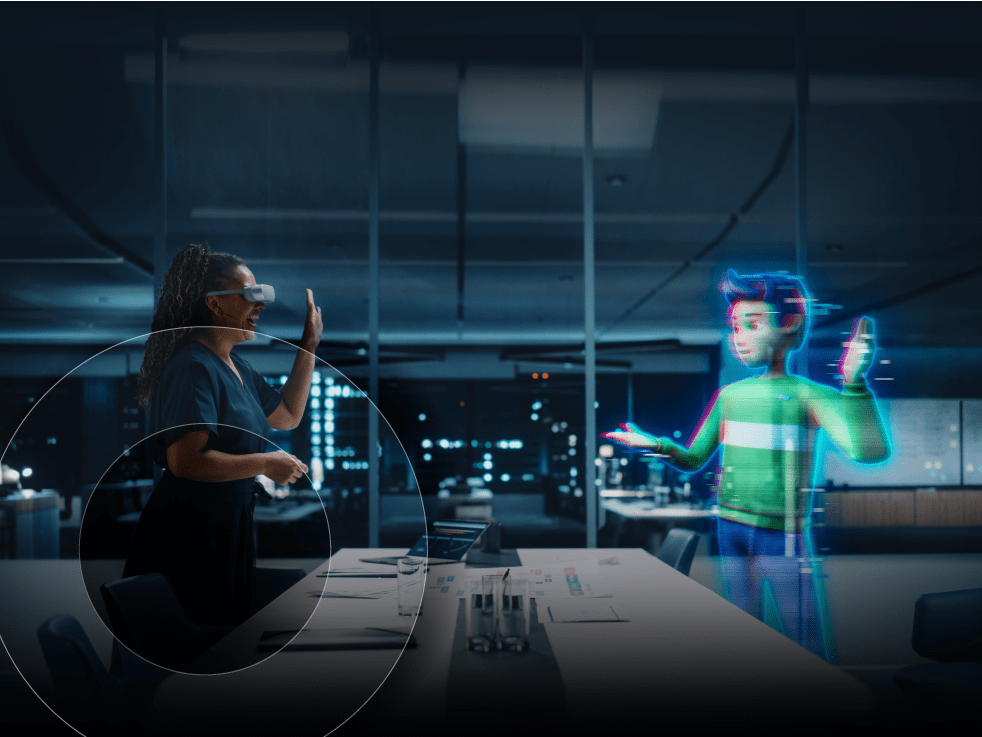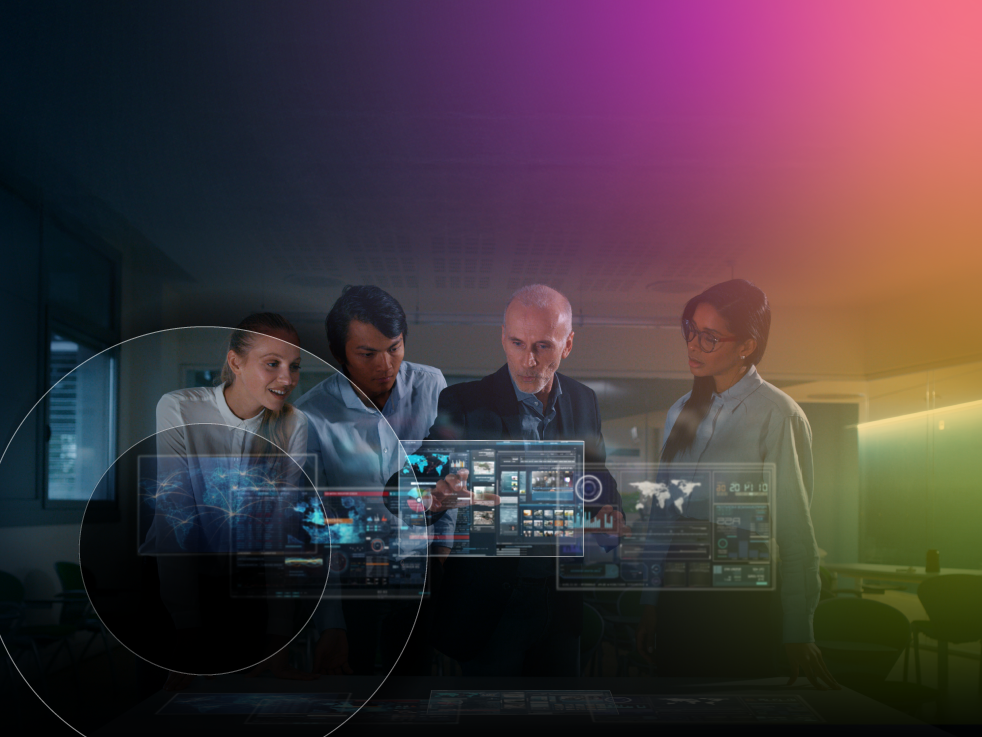No, Generative AI didn’t murder the metaverse. It humanized it.:
The metaverse provides a platform, and generative AI fills it with life.

The metaverse, a term once relegated to the pages of science fiction, is now a tangible digital universe, reshaping our interactions, work, and social paradigms. It’s a realm where organizations set up virtual offices, educators craft immersive learning experiences, and artists showcase their creations in expansive digital galleries.
While this virtual utopia has the potential to make “Ready Player One” look like “Ready Player None,” it’s all but taken a backseat to the latest technological buzzword that’s currently on everyone’s lips: generative AI.
And rightfully so.
Generative AI isn’t just a tool that mimics human creativity; it’s a reflection of our collective aspirations, knowledge, and emotions. By analyzing vast datasets, it crafts content that resonates deeply, from art to music to insightful prose.
According to Insider Intelligence, generative AI has a stronger adoption rate than tablets and smartphones, projecting there will be 77.8 million users in the two years following ChatGPT’s November 2022 release. McKinsey estimates that generative AI’s impact on productivity could add between $2.6 trillion and $4.4 trillion annually to the global economy.
The rapid emergence of generative AI and its ability to produce novel content has led some to question the future of the metaverse. But that couldn’t be further from the truth. The integration of AI will propel the metaverse to its full potential.
Welcome to the era of enablement
Digital transformation isn’t quite dead, but it’s undoubtedly transformed. It’s now the era of enablement.
Where the former stresses leveraging technology to streamline processes, enhance efficiency, and improve customer experiences across various industries, the latter concentrates on leveraging technology to make humans more creative, agile, and interactive while focusing on the things that need their attention. AI and the metaverse will fuel this era.
The convergence of these technologies promises a future where our digital and physical realities intertwine seamlessly, offering unparalleled experiences.
How AI and the metaverse complement each other
The metaverse provides a platform, and generative AI fills it with life.
Imagine virtual concerts where AI crafts music based on the audience’s emotions or digital fashion shows with AI-designed apparel tailored to global trends. The metaverse offers the stage, and AI brings the performance.
But this is just the beginning. Consider a virtual art gallery where artworks evolve based on viewer interactions — thanks to AI’s ability to interpret and respond to user emotions and preferences — or a virtual office where generative AI instantly creates 3D models or presentations, streamlining project visualization or brainstorming sessions.
Education in the metaverse also stands to benefit immensely from this collaboration, as traditional field trips can transform into immersive explorations. Instead of reading about ancient Rome, students can walk its streets, interact with AI-driven characters, and witness historical events firsthand. Generative AI can craft these experiences, ensuring they are informative and tailored to each student’s learning style and pace.
The convergence of AI and the metaverse isn’t something we have to wait on, either. It’s already happening as we speak.
Profiting from the AI-metaverse synergy
The fusion of the metaverse and generative AI is a commercial goldmine.
The allure of virtual real estate in the metaverse is undeniable. Companies aren’t just buying digital land as speculative assets but are envisioning them as spaces for virtual offices, showrooms, and entertainment venues. In 2021, real estate sales in the metaverse eclipsed $500 million. The market share is estimated to grow $5.37 billion by 2026.
Physical stores have their charm, but virtual shops in the metaverse offer an unparalleled, immersive shopping experience. Gucci, for example, launched a digital space that lets you design virtual kicks. Nike has its own virtual sneaker platform. Digital fashion is also making its way from the metaverse into the real world.
During a learning session hosted by The World Economic Forum, artist Refik Anadol discussed how AI could help create metaverse spaces that previously only existed in the human imagination. Hewlett Packard Enterprise (HPE) is exploring generative AI to instantly create 3D models, images, and environments in the metaverse through voice commands. Other partners want to use generative AI to rapidly create unique content and scale metaverse development without needing expert developers.
Once a fantastical concept, the metaverse is now a bustling hub of organizational innovation. With the might of AI, the horizon is expansive, and the possibilities are boundless.
Remember the human touch
While the fusion of generative AI and the metaverse promises unparalleled experiences, you can’t lose sight of the human element.
The human touch keeps technology moving forward — and we have a responsibility to anchor our advancements in the principles of ethics, inclusivity, and genuine human connection. The ultimate goal should always be to enhance human experiences. This means designing metaverse spaces and AI interactions that prioritize user well-being, mental health, and overall satisfaction.
And that’s where SHI comes in.
Our approach to AI and the metaverse is rooted in human-centric design, ensuring that every digital interaction feels genuine and enriching. We make sure technology serves people, not the other way around.
By understanding your unique needs and aspirations, SHI can help you craft experiences in the metaverse that resonate on a personal level while developing AI solutions that are transparent, fair, and responsible. From ensuring that virtual spaces are intuitive and user-friendly to crafting AI interactions that feel genuine and enriching, SHI is dedicated to making the digital feel human.
The revolution has just begun
Generative AI and the metaverse are undergoing an exciting stage of progress and mainstream adoption. This is a revolution where both will grow together — and humans will help shape that growth.
This symbiotic relationship will enable us to break through creative barriers, produce mind-blowing ideas, and bring all those fantastic experiences to life in the virtual world.
Yet, as we navigate this new era, we must remember that the metaverse and generative AI aren’t just coexisting; they’re thriving together, setting the stage for a future that promises to be as exciting as it is unpredictable.
Today is only the beginning.
Ready to learn how to effectively cultivate your AI strategy and use the metaverse to advance your organization’s needs? Contact SHI to get started.




